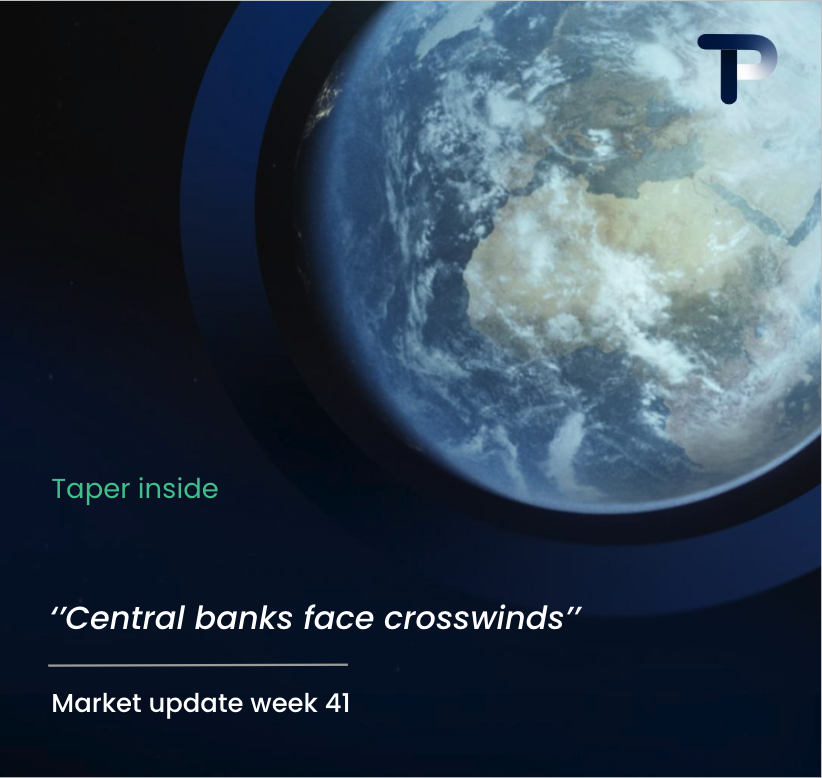Digital trade finance offers significant advantages over traditional methods, including faster processing times, reduced operational costs, enhanced security through advanced technology, and improved accessibility for small and medium enterprises. These digital solutions streamline documentation workflows, eliminate manual bottlenecks, and provide real-time transparency throughout the entire trade finance process, making international commerce more efficient and cost-effective for businesses of all sizes.
Understanding digital trade finance in today’s global marketplace
Digital trade finance represents the technological transformation of traditional trade financing methods, replacing paper-based processes with automated, electronic systems. This modernisation fundamentally changes how businesses access working capital, manage supply chains, and execute international transactions.
Unlike conventional trade finance that relies heavily on physical documentation and manual processing, digital platforms integrate multiple services into streamlined workflows. These systems connect importers, exporters, banks, and other financial institutions through secure digital channels, creating more efficient pathways for international commerce.
The shift towards digitalisation addresses longstanding challenges in global trade, particularly for SMEs who previously struggled with complex documentation requirements and lengthy approval processes. Modern trade finance solutions now offer integrated platforms that combine payment processing, currency exchange, and financing options under one roof.
This transformation extends beyond simple digitisation of existing processes. Advanced platforms incorporate real-time data analytics, automated compliance checks, and intelligent matching systems that connect businesses with appropriate financing partners based on their specific requirements and risk profiles.
What are the main advantages of digital trade finance?
Digital trade finance benefits encompass speed, cost reduction, transparency, security, and accessibility improvements that transform how businesses manage international transactions. These advantages collectively address the most pressing challenges faced by companies engaged in global commerce.
Processing speed represents one of the most significant improvements, with digital platforms reducing transaction times from weeks to days or even hours. Automated document verification, electronic signatures, and instant communication between parties eliminate traditional bottlenecks that previously delayed trade finance approvals.
Cost efficiency emerges through reduced intermediary fees, lower operational expenses, and elimination of paper-based transaction costs. Digital platforms often provide more competitive exchange rates and transparent fee structures, allowing businesses to better predict and control their financing costs.
Enhanced accessibility particularly benefits SMEs who previously found traditional trade finance products difficult to obtain. Digital platforms can assess creditworthiness using alternative data sources and provide flexible financing options tailored to smaller transaction volumes.
Security improvements through encryption, blockchain technology, and digital authentication create more robust protection against fraud whilst maintaining comprehensive audit trails for compliance purposes.
How does digital trade finance improve transaction speed and efficiency?
Digital platforms accelerate international trade financing by eliminating manual processing steps and enabling real-time communication between all parties involved in trade transactions. Automated workflows replace time-consuming paper-based procedures with instant digital processes.
Document processing receives significant acceleration through optical character recognition and automated verification systems. These technologies can instantly validate trade documents, check compliance requirements, and flag potential issues without human intervention, reducing processing times from days to minutes.
Real-time tracking capabilities allow all stakeholders to monitor transaction progress continuously. Businesses can access live updates on their financing applications, payment statuses, and document approvals through integrated dashboards, eliminating the need for constant communication with multiple parties.
Integration with existing business systems streamlines data entry and reduces errors. Modern platforms can connect directly with enterprise resource planning systems, accounting software, and supply chain management tools, creating seamless workflows that require minimal manual input.
Automated matching systems connect businesses with appropriate financing partners based on their specific requirements, transaction types, and risk profiles, significantly reducing the time needed to secure suitable financing arrangements.
Why is digital trade finance more cost-effective than traditional methods?
Digital trade finance advantages in cost reduction stem from operational efficiency improvements, reduced intermediary involvement, and automated processing that eliminates many manual labour costs associated with traditional methods.
Operational expense reduction occurs through streamlined workflows that require fewer human resources to process transactions. Automated systems can handle routine tasks such as document verification, compliance checking, and status updates without manual intervention, significantly reducing administrative costs.
Intermediary fee elimination represents another major cost saving. Digital platforms often connect businesses directly with funding sources or use their own financing facilities, reducing the number of parties involved in each transaction and the associated fees.
Paper-based transaction costs disappear entirely with digital systems. Traditional trade finance involves substantial costs for printing, courier services, storage, and physical document handling. Digital platforms eliminate these expenses whilst providing more secure and accessible document management.
Competitive pricing emerges from increased market transparency and competition. Digital platforms can offer real-time rate comparisons and automated bidding processes that help businesses secure the most favourable terms for their financing needs.
Working capital optimisation becomes more achievable through faster processing times and flexible repayment options, allowing businesses to manage their cash flow more effectively and reduce the overall cost of financing their international operations.
How does digital trade finance enhance security and transparency?
Advanced security features in trade finance solutions include blockchain technology, encrypted data transmission, and multi-factor authentication systems that provide superior protection compared to traditional paper-based methods.
Blockchain technology creates immutable transaction records that cannot be altered or falsified, providing unprecedented security for trade finance documentation. Each transaction receives a unique digital fingerprint that can be verified by all authorised parties, eliminating the risk of document fraud.
Digital authentication systems use multiple verification methods to confirm the identity of all parties involved in transactions. These systems can include biometric verification, digital certificates, and secure token authentication, creating multiple layers of security protection.
Encrypted data transmission ensures that all sensitive information remains protected during transfer between parties. Advanced encryption protocols make it virtually impossible for unauthorised parties to intercept or access confidential trade finance data.
Real-time audit trails provide complete visibility into every action taken during the transaction process. These comprehensive logs create transparency for all stakeholders whilst providing detailed records for compliance and regulatory reporting requirements.
Automated compliance monitoring continuously checks transactions against regulatory requirements and sanctions lists, reducing the risk of non-compliance and providing immediate alerts if potential issues arise.
Key takeaways: maximising the benefits of digital trade finance solutions
The most important digital trade finance benefits centre on operational efficiency, cost reduction, and enhanced security that collectively transform how businesses approach international commerce. These advantages make global trade more accessible and manageable for companies of all sizes.
Successful adoption requires careful evaluation of platform capabilities, integration requirements, and ongoing support services. Businesses should prioritise solutions that offer comprehensive functionality, including multi-currency support, automated compliance features, and seamless integration with existing systems.
Partnership selection plays a vital role in maximising benefits. The most effective digital trade finance providers combine technological innovation with personalised service, offering dedicated support teams that understand the unique challenges faced by internationally operating businesses.
Long-term value creation emerges when businesses leverage digital platforms not just for individual transactions, but as part of comprehensive international growth strategies. These solutions enable companies to expand into new markets with greater confidence and reduced operational complexity.
For businesses considering the transition to digital trade finance, TaperPay offers integrated solutions that combine competitive rates, transparent processes, and personalised support. Our platform addresses the specific needs of SMEs engaged in international payments, providing the tools and expertise needed to navigate global markets effectively whilst maintaining focus on core business growth objectives.
Frequently Asked Questions
How do I transition my business from traditional to digital trade finance?
Start by evaluating your current trade finance processes and identifying pain points such as slow document processing or high fees. Choose a digital platform that integrates with your existing systems and offers comprehensive support during the transition. Most providers offer onboarding assistance and training to ensure smooth adoption without disrupting ongoing operations.
What happens if there are technical issues or system downtime with digital platforms?
Reputable digital trade finance providers maintain robust backup systems and 24/7 technical support to minimise disruptions. Look for platforms that offer service level agreements guaranteeing uptime percentages and have contingency procedures in place. Most established providers also maintain hybrid capabilities to process urgent transactions manually if needed.
Are digital trade finance platforms suitable for complex, high-value transactions?
Yes, modern digital platforms are designed to handle transactions of all sizes and complexity levels. They often provide enhanced security features like blockchain verification and multi-party authentication that are particularly valuable for high-value deals. Many platforms also offer dedicated relationship managers for complex transactions requiring personalised attention.
How do digital trade finance platforms ensure regulatory compliance across different countries?
Leading platforms incorporate automated compliance monitoring that continuously updates regulatory requirements across multiple jurisdictions. They maintain databases of international sanctions lists, trade regulations, and documentation requirements, automatically flagging potential compliance issues. However, businesses should still work with legal advisors for complex international transactions.
What are the typical implementation costs and timeframes for adopting digital trade finance?
Implementation costs vary depending on integration complexity and transaction volumes, but many platforms offer flexible pricing models with no upfront fees. Typical implementation timeframes range from 2-6 weeks for basic setups, including system integration, staff training, and initial transaction testing. Most providers offer transparent pricing structures during the evaluation process.
Can digital trade finance platforms integrate with my existing ERP and accounting systems?
Most modern digital trade finance platforms offer API integrations with popular ERP systems like SAP, Oracle, and accounting software such as QuickBooks or Xero. This integration enables automatic data synchronisation, reducing manual entry errors and streamlining financial reporting. Discuss integration capabilities with potential providers during the selection process.
What should I do if my international trading partners are not yet using digital platforms?
Many digital trade finance platforms accommodate mixed workflows where some parties use digital systems while others remain on traditional processes. The platform can generate necessary paper documents for non-digital partners while maintaining digital efficiency for your internal processes. Over time, you can encourage partners to adopt digital solutions by demonstrating the benefits and cost savings.
Hi there! 👋 I see you're reading about multi-currency IBAN accounts for supply chain payments. Smart choice - these accounts can save businesses 2-4% on every international transaction!
What best describes your current situation with international supplier payments?
Which of these challenges are you currently facing with international payments? (Select all that apply)
What's driving your interest in multi-currency payment solutions? Tell us about your business goals or challenges.
Great! To help us understand your specific needs better, could you share more details about your international payment volume or any particular requirements?
Perfect! Let's connect you with one of our international payments specialists who can show you exactly how Taper's multi-currency IBAN accounts can save you money and streamline your supply chain payments.



